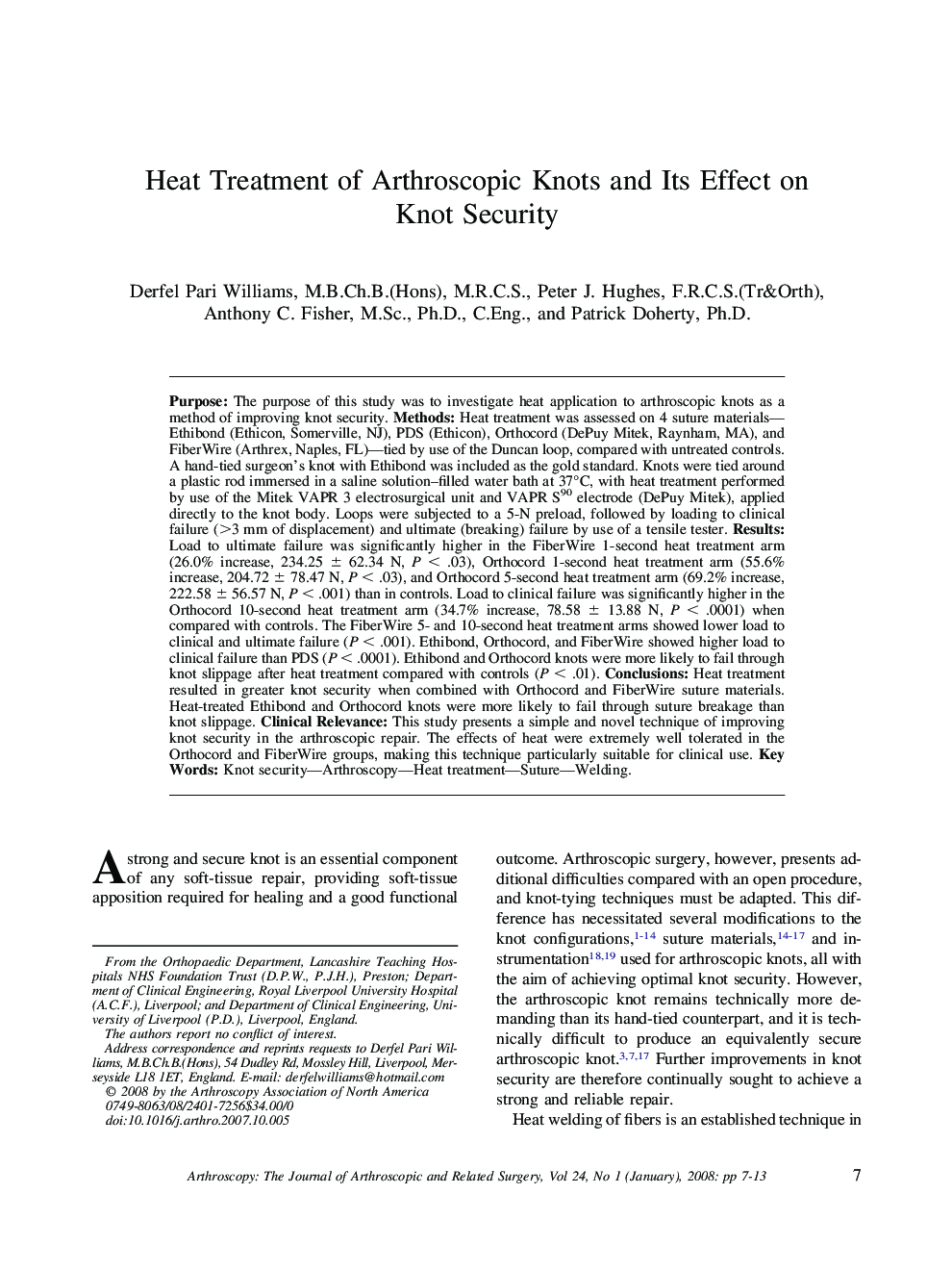| Article ID | Journal | Published Year | Pages | File Type |
|---|---|---|---|---|
| 4045196 | Arthroscopy: The Journal of Arthroscopic & Related Surgery | 2008 | 7 Pages |
Purpose: The purpose of this study was to investigate heat application to arthroscopic knots as a method of improving knot security. Methods: Heat treatment was assessed on 4 suture materials—Ethibond (Ethicon, Somerville, NJ), PDS (Ethicon), Orthocord (DePuy Mitek, Raynham, MA), and FiberWire (Arthrex, Naples, FL)—tied by use of the Duncan loop, compared with untreated controls. A hand-tied surgeon’s knot with Ethibond was included as the gold standard. Knots were tied around a plastic rod immersed in a saline solution–filled water bath at 37°C, with heat treatment performed by use of the Mitek VAPR 3 electrosurgical unit and VAPR S90 electrode (DePuy Mitek), applied directly to the knot body. Loops were subjected to a 5-N preload, followed by loading to clinical failure (>3 mm of displacement) and ultimate (breaking) failure by use of a tensile tester. Results: Load to ultimate failure was significantly higher in the FiberWire 1-second heat treatment arm (26.0% increase, 234.25 ± 62.34 N, P < .03), Orthocord 1-second heat treatment arm (55.6% increase, 204.72 ± 78.47 N, P < .03), and Orthocord 5-second heat treatment arm (69.2% increase, 222.58 ± 56.57 N, P < .001) than in controls. Load to clinical failure was significantly higher in the Orthocord 10-second heat treatment arm (34.7% increase, 78.58 ± 13.88 N, P < .0001) when compared with controls. The FiberWire 5- and 10-second heat treatment arms showed lower load to clinical and ultimate failure (P < .001). Ethibond, Orthocord, and FiberWire showed higher load to clinical failure than PDS (P < .0001). Ethibond and Orthocord knots were more likely to fail through knot slippage after heat treatment compared with controls (P < .01). Conclusions: Heat treatment resulted in greater knot security when combined with Orthocord and FiberWire suture materials. Heat-treated Ethibond and Orthocord knots were more likely to fail through suture breakage than knot slippage. Clinical Relevance: This study presents a simple and novel technique of improving knot security in the arthroscopic repair. The effects of heat were extremely well tolerated in the Orthocord and FiberWire groups, making this technique particularly suitable for clinical use.
